|
|
|
Sort Order |
|
|
|
Items / Page
|
|
|
|
|
|
|
| Srl | Item |
| 1 |
ID:
006593
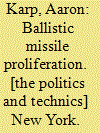

|
|
|
|
|
| Publication |
New York, Oxford University Press, 1996.
|
| Description |
xi, 228p.
|
| Standard Number |
0198291736
|
|
|
|
|
|
|
|
|
|
|
|
Copies: C:1/I:0,R:0,Q:0
Circulation
| Accession# | Call# | Current Location | Status | Policy | Location |
| 037752 | 358.17/KAR 037752 | Main | On Shelf | General | |
|
|
|
|
| 2 |
ID:
090448
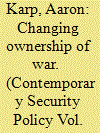

|
|
|
|
|
| Publication |
2009.
|
| Summary/Abstract |
As the state loses not only its Weberian monopoly over legitimate violence, but also its control over military initiative and dominance of military technology, what forces lead the redefinition of the ends and means of armed violence? If non-state armed groups are understood as the new owners of war, how must our understanding of the artefacts of violence adapt as well? This article examines the effects of changes in the legitimacy of violence on its physical manifestations. Weapons technologies have ceased to be an independent variable of violence and become consequences of strategic and doctrinal choice. As states lose the ability to use technology to regulate warfare, technological virtuosity no longer is defined by the state, but by the initiators of violence. It follows that the most important violent technologies no longer are state-generated. They are adaptations and creations by terrorists and insurgents. This transformation affects priorities and possibilities for control over violent technology. Innovative statist methods - as developed through the Proliferation Security Initiative (PSI) and UNSC 1540 - remain highly relevant, as do Westphalian concepts such as export control and disarmament. Recognizing limits to their effectiveness in an environment where rules are set by non-state actors as much as by states themselves, however, is crucial
|
|
|
|
|
|
|
|
|
|
|
|
|
|
|
|
| 3 |
ID:
072624
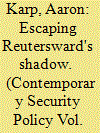

|
|
|
|
|
| Publication |
2006.
|
| Summary/Abstract |
The small arms agenda remains almost exclusively reactive, responding mostly to the needs of the states that finance small arms diplomacy and fieldwork. NGOs and research institutes, tied to government priorities, have been unable to develop an independent voice. Activists have sought influence over small arms politics instead by broadening their agenda to include related social pathologies. This strategy, pragmatic in the short term, threatens the integrity and durability of small arms activism in the long run. It has allowed small arms activism to prosper without articulating the kind of goals necessary to sustain it. Instead of clear goals, the field has been guided largely by images, including art, represented in this essay by Carl Fredrik Reuterswärd's Non-Violence. To assure its health and influence, small arms activism, research and policy requires greater control over its agenda. Instead of relying on aesthetic inspiration and the tendency to broaden its agenda, the field requires deeper engagement with core concerns. This can only come through articulation of goals to explicitly reduce the role of firearms in human affairs. The place for such action is less in the United Nations and more through national campaigns, focusing on states, the only bodies that actually own and regulate guns.
|
|
|
|
|
|
|
|
|
|
|
|
|
|
|
|
| 4 |
ID:
083330
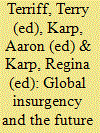

|
|
|
|
|
| Publication |
London, Routledge, 2008.
|
| Description |
ix, 303p.
|
| Series |
Routledge global security studies
|
| Standard Number |
9780415413572
|
|
|
|
|
|
|
|
|
|
|
|
Copies: C:1/I:0,R:0,Q:0
Circulation
| Accession# | Call# | Current Location | Status | Policy | Location |
| 053841 | 355.0218/TER 053841 | Main | On Shelf | General | |
|
|
|
|
| 5 |
ID:
062290
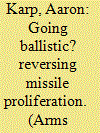

|
|
|
| 6 |
ID:
083381
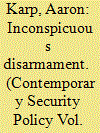

|
|
|
|
|
| Publication |
2008.
|
| Summary/Abstract |
Small arms disarmament is reshaping the global distribution of firearms, light weapons and ammunition. It is far from comprehensive, but much more than cosmetic. Its importance has been widely recognized, but seldom evaluated. The case studies in this volume examine the politics of when surpluses actually get destroyed. When, they ask, is surplus destruction most likely? And what can be done to make destruction more likely?
Perhaps the key characteristic shaping small arms disarmament is it has not been treaty-driven. Much of the trouble comparing small arms disarmament to better known programmes comes from the informal nature of these processes. The low visibility also is a side effect of the low visibility of small arms politics generally, typically the responsibility of mid-level officials, with high-level officials mostly playing ceremonial roles. But inconspicuous does not mean unimportant. Small arms and ammunition destruction directly affects prospects for future violence. By eliminating the weapons most likely to be used, it directly limits the dangers of violent crime and terrorism, and inhibits the descent into warfare.
|
|
|
|
|
|
|
|
|
|
|
|
|
|
|
|
| 7 |
ID:
054581
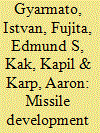

|
|
|
|
|
| Publication |
New York, United Nations, Department for Disarmament Affairs, 1999.
|
| Description |
v, 55p.
|
| Series |
DDA occasional papers; no.2
|
|
|
|
|
|
|
|
|
|
|
|
Copies: C:2/I:0,R:0,Q:0
Circulation
| Accession# | Call# | Current Location | Status | Policy | Location |
| 043782 | 358.17/GYA 043782 | Main | On Shelf | General | |
| 043848 | 358.17/GYA 043848 | Main | On Shelf | General | |
|
|
|
|
| 8 |
ID:
058607
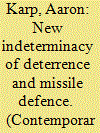

|
|
|
| 9 |
ID:
115799
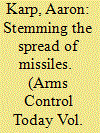

|
|
|
| 10 |
ID:
083390
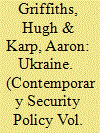

|
|
|
|
|
| Publication |
2008.
|
| Summary/Abstract |
Ukraine hosts the world's largest foreign-funded SALW and ammunition destruction program. Designed to eliminate 133,000 tons of ammunition, 1,531,664 small arms and 1,000 Man-Portable Air-Defence Systems (MANPADS), the NATO-sponsored Ukraine destruction program is far larger than any other internationally sponsored small arms destruction project ever undertaken. Even if fully implemented, however, the NATO-Ukraine project will eliminate only about five per cent of the country's total of some 2.4 million tons of ammunition and no more than 20 per cent of an official small arms inventory numbering somewhere between six and 15 million weapons. Destruction has been limited partially by the slow pace of military reform, but even more by financial pressure, decision-making weakness, and the desire to sell surplus weapons. If current impasses can be overcome, if reforms continue and additional foreign funding becomes available, destruction of the Ukraine surplus could continue for decades. Meanwhile, Ukraine's massive stockpiles are subject to catastrophic accidents, theft, diversion, and unpredictable exports.
|
|
|
|
|
|
|
|
|
|
|
|
|
|
|
|
|
|
|
|
|